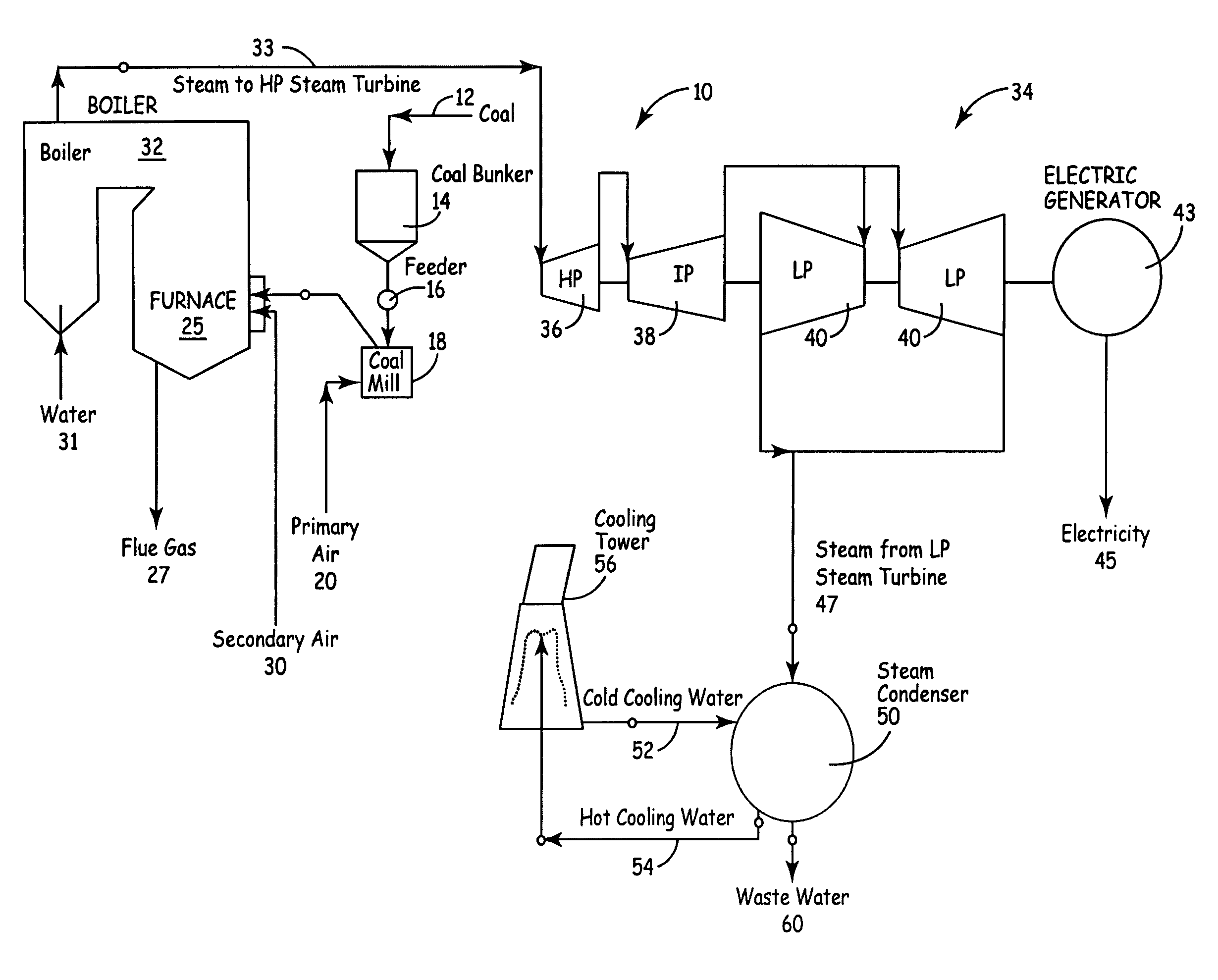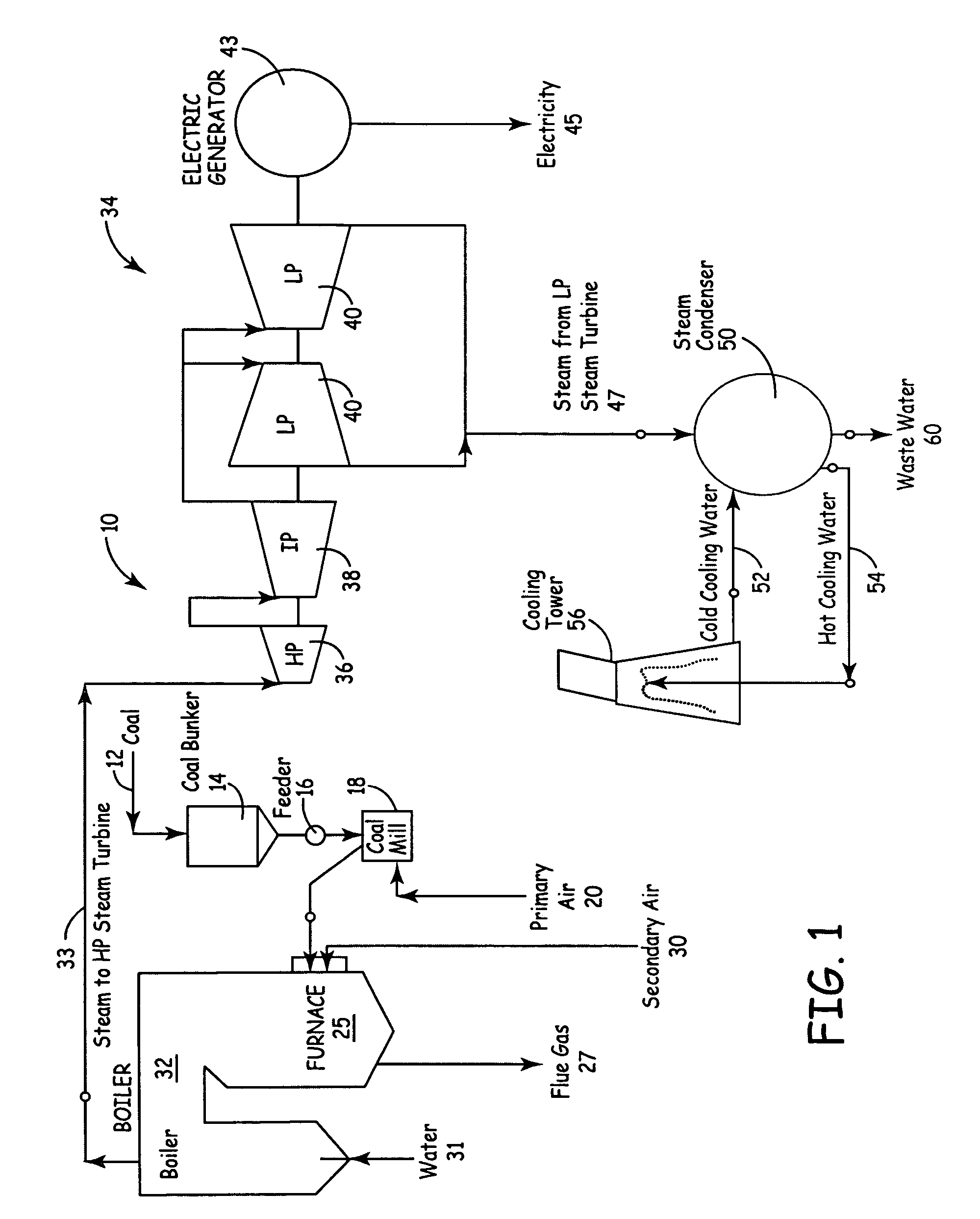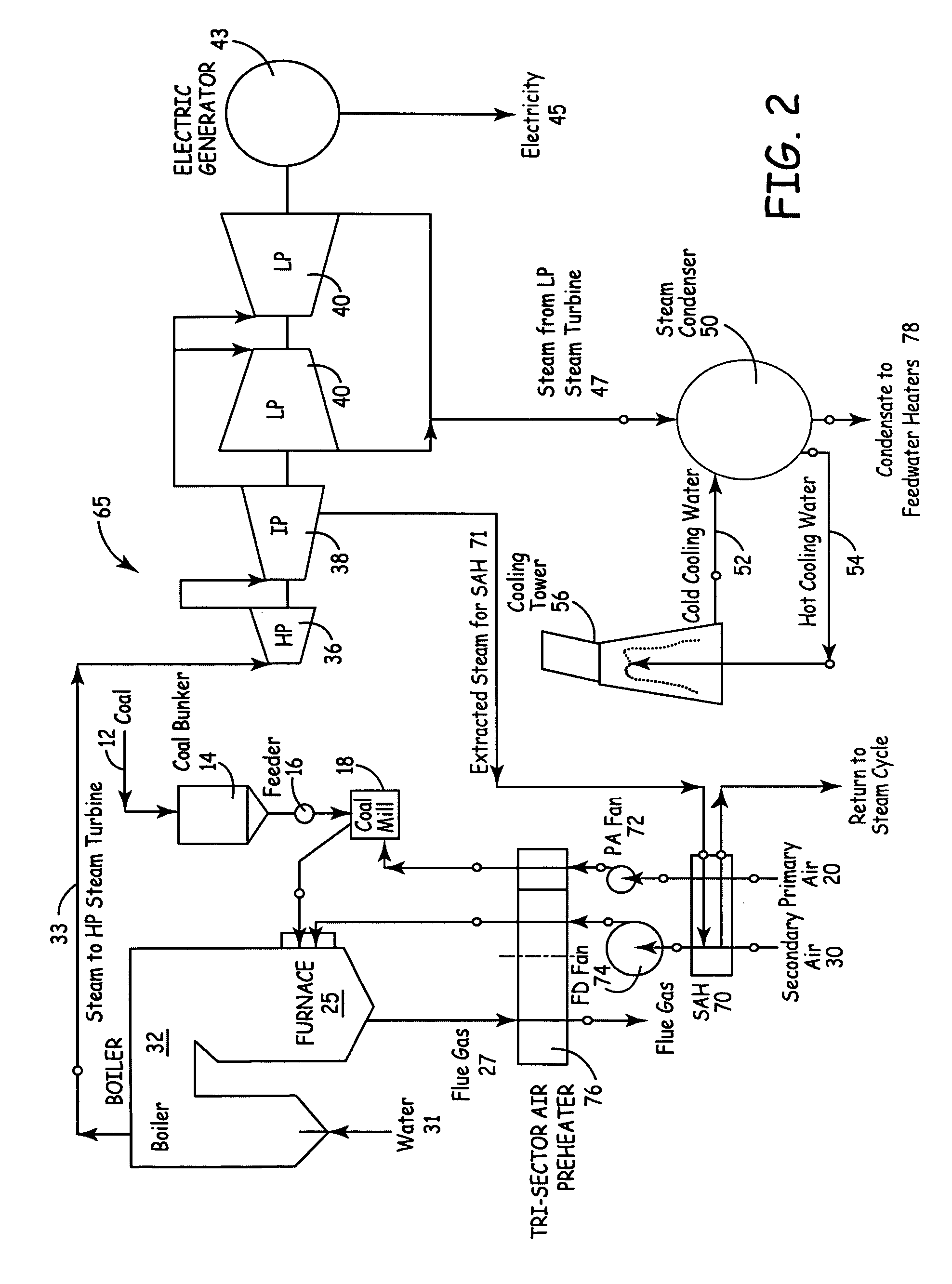Apparatus and method of separating and concentrating organic and/or non-organic material
a technology of organic and non-organic materials, applied in the direction of lighting and heating apparatus, charge manipulation, furnaces, etc., can solve the problems of not being able to separate coal particles containing organic sulfur from coal particles largely free of sulfur, affecting the quality of the finished product, so as to increase the amount of usable non-contaminated, and reduce the amount of contaminated particulates
- Summary
- Abstract
- Description
- Claims
- Application Information
AI Technical Summary
Benefits of technology
Problems solved by technology
Method used
Image
Examples
example i
Effect of Moisture Reduction on the Coal Composition
[0124]PRB coal and lignite coal samples were subjected to chemical and moisture analysis to determine their elemental and moisture composition. The results are reported in Table 1 below. As can be seen, the lignite sample of coal exhibited on average 34.03% wt carbon, 10.97% wt oxygen, 12.30% wt fly ash, 0.51% wt sulfur, and 38.50% wt moisture. The PRB subbituminous coal sample meanwhile exhibited on average 49.22% wt carbon, 10.91% wt oxygen, 5.28% wt fly ash, 0.35% wt sulfur, and 30.00% moisture.
[0125]An “ultimate analysis” was conducted using the “as-received” values for these lignite and PRB coal samples to calculate revised values for these elemental composition values, assuming 0% moisture and 0% ash (“moisture and ash-free”), and 20% moisture levels, which are also reported in Table 1. As can be seen in Table 1, the chemical compositions and moisture levels of the coal samples significantly change. More specifically for the ...
example ii
Pilot Dryer Coal Particle Segregation Results
[0127]During the Fall of 2003 and Summer of 2004, over 200 tons of lignite was dried in a pilot fluidized bed coal dryer built by Great River Energy at Underwood, N. Dak. The dryer capacity was 2 tons / hr and was designed for determining the economics of drying North Dakota lignite using low-temperature waste heat and determining the effectiveness of concentrating impurities such as mercury, ash and sulfur using the gravimetric separation capabilities of a fluidized bed.
[0128]Coal streams in and out of the dryer included the raw coal feed, processed coal stream, elutriated fines stream and the undercut. During tests, coal samples were taken from these streams and analyzed for moisture, heating value, sulfur, ash and mercury. Some of the samples were sized and further analysis was done on various size fractions.
[0129]The pilot coal dryer was instrumented to allow experimental determination of drying rates under a variety of operating condit...
example iii
Some More Particle Segregation Results
[0138]Between September and December 2004, 115 tons of Canadian Lignite was dried at the modified, two-stage pilot dryer located at Underwood, N. Dak. Between 3 and 20 tons of material was run through the dryer during a daily test at flow rates of 2000-7000 lbs / hr. This produced coal with moisture levels of 15-24% from a 31% moisture feed stock.
[0139]Load cells on the coal bunker provided the flow rate and total coal input into the dryer. The undercut and dust collector elutriation was collected into totes, which were weighed before and after each test. The output product stream was collected in a gravity trailer, which was equipped with a scale. The coal feed system was designed to supply ¼-minus coal particles at up to 8000 lbs / hr to the dryer. The air system was designed to supply 6000 SCFM at 40 inches of water. An air heating coil input of 438,000 BTU / hr and a bed coil input of about 500,000 BTU / hr were applied to the dryer. This was enough...
PUM
 Login to View More
Login to View More Abstract
Description
Claims
Application Information
 Login to View More
Login to View More - R&D
- Intellectual Property
- Life Sciences
- Materials
- Tech Scout
- Unparalleled Data Quality
- Higher Quality Content
- 60% Fewer Hallucinations
Browse by: Latest US Patents, China's latest patents, Technical Efficacy Thesaurus, Application Domain, Technology Topic, Popular Technical Reports.
© 2025 PatSnap. All rights reserved.Legal|Privacy policy|Modern Slavery Act Transparency Statement|Sitemap|About US| Contact US: help@patsnap.com



